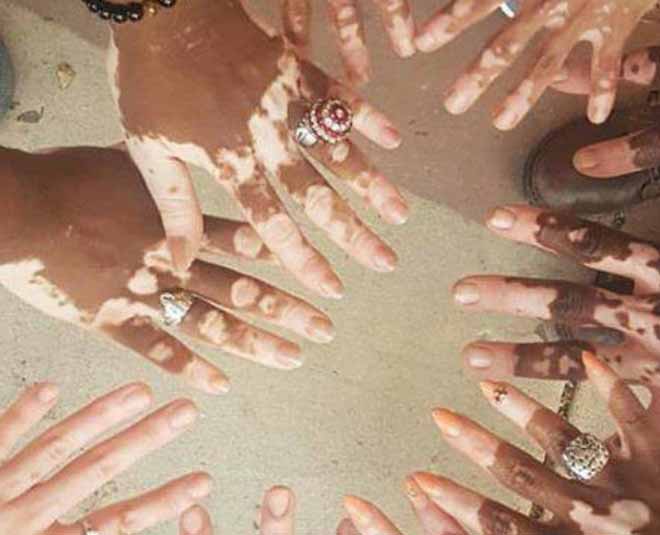
World Vitiligo Day 2020: All You Need To Know About Vitiligo & Its Symptoms
Vitiligo is something that could happen to anyone. It is a skin disease that is first of all not communicable. The loss of skin colour in patches and the dicolouration tends to increase with time. Many people have an issue standing next to people with this disease which is a completely wrong attitude. To understand what is it all about, this World Vitiligo Day 2020, update yourself and read on to know more about the symptoms and if there are any treatments that might help in stopping it.
This skin disease can also affect your hair and the inside of your mouth. For the unaware, the presence of melanin in our body determines the colour of our skin and hair. Vitiligo comes in when our skin cells stop producing melanin. It can happen to the fairest to the darkest skin types but it is more prominent on darker skin. It is not a contagious or life-threatening disease. Some people stress about it and feel bad but really it is okay and even the best of skin specialists have it.

The exact causes of vitiligo are unclear but there are a few factors which may contribute:
- It can be caused due to an overactive immune system also called an autoimmune disorder.
- Critical sunburn may cause vitiligo.
- If you have a genetic oxidative stress imbalance, it is possible to have skin discolouration.
- It could be hereditary as well, where even a single family member, generations ago, might have had it.
Symptoms
- You start having patchy skin on your hands, face, feet, and near the genital area as well.
- one might notice premature greying of your hair, eyebrows or even eyelashes in some cases.
- The tissues that line the inside of your mouth and nose may lose colour as well.
- Vitiligo can happen at any age, but it mostly appears before the age of 30.
Treatment
According to the American Academy of Dermatology (AAD) vitiligo is "more than a cosmetic problem. It is a health issue that needs medical attention."
Don't Miss: Expert Tips To Keep Intimate Hygiene In Check During Summer Season
According to a health website, Medical News Today, there are a few remedies that can be of some help in decreasing the visibility of this condition:
Sunscreen

The AAD recommends that you use a sunscreen as it helps in covering the lighter patches of skin which can burn as well due to the sensitivity quotient to the sun. Get in touch with your dermatologist to know which sunscreen would be the best for your skin.
Calcipotriene (Dovonex)
A form of vitamin D, Calcipotriene is a topical ointment that may be used with corticosteroids. However, it does have side effects like itching, dry skin and rashes.
To know more on health, stay tuned to HerZindagi.
Also watch this video
Herzindagi video